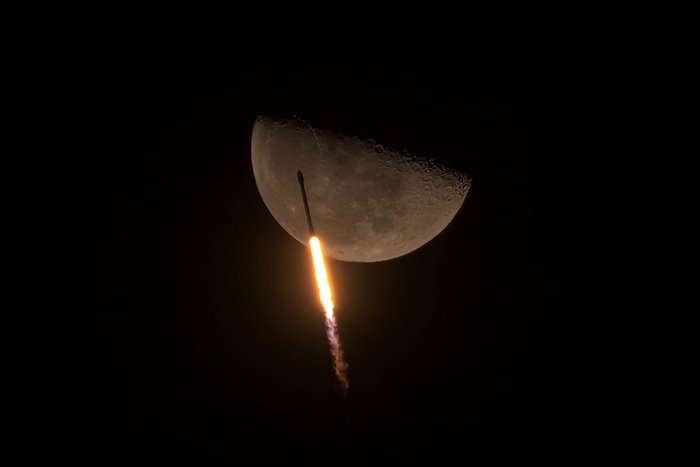Winners Of The Royal Observatory Greenwich Astronomy Photographer Of The Year 2021 Competition
The Winners Of The 13th Annual Astronomy Photographer Of The Year Competition By The Royal Greenwich Observatory Have Been Published Online.
The Royal Observatory Greenwich has announced the winners of its 13th annual Astrophotographer of the Year competition. The competition awarded a prize of 10,000 pounds (about $13,793) to the best-selected work, a beautiful photograph of a solar eclipse entitled “The Golden Ring.”
According to Petapixel, the Astronomy Photographer of the Year competition is run by the Royal Observatory Greenwich in collaboration with the BBC’s Sky at Night magazine. In its 13th year, the organizers of this competition say they have received more than 4,500 works from 75 countries.
The best of these exceptional photographs (winners, runners-up, honorary winners, and shortlist) will be showcased in the Astronomy Photographer of the Year exhibition at the National Maritime Museum.
Winners Of The Royal Observatory Greenwich Astronomy Photographer Of The Year 2021 Competition
The competition shared some top submissions earlier this summer when it released its shortlist of images of the year.
The competition includes 11 general categories: Northern Lights, Galaxies, Our Moon, Our Sun, People and Space, Planets, Comets and Asteroids, Skyscapes, Stars and Nebulae, Best Newcomer, and Young.
“The Golden Ring” by Shuchang Dong was selected as the winner of the “Our Sun” category and the overall winning image.
This photo depicts the annular solar eclipse that occurred on June 21, 2020, in a solid atmospheric combination.
On June 21, 2020, there was an annular solar eclipse, and the photographer of the competition’s best work made sure not to miss it. He decided to go to Tibet for photography; because it has sunny weather throughout the year, But in an annular eclipse, there will be dark clouds all over the sky.
Within a minute of the start of the annular solar eclipse, sunlight broke through the clouds, and the photographer was lucky enough to capture the moment. After that, the sun disappeared again.
Below are the winning images from the other categories, along with descriptions of the photos provided by the Royal Observatory.
Aurora
Polar Lights Dance by Dimitri Rybalka

The photographer of the best work of this section was standing guard on the ship’s bridge one night as the third officer when he suddenly noticed a white band in the sky that approached him like a snake.
He felt something in the air, and something big would happen; He knew instantly that this was the moment he had been waiting for. He picked up his camera, walked to the side of the bridge, adjusted his position, and waited.
A few minutes later, the sky was filled with bright green lights that danced in the darkness, illuminating everything in their path. The photographer felt his mission was to share this beauty with the world.
Galaxies
The Milky Ring by Zhong Wu
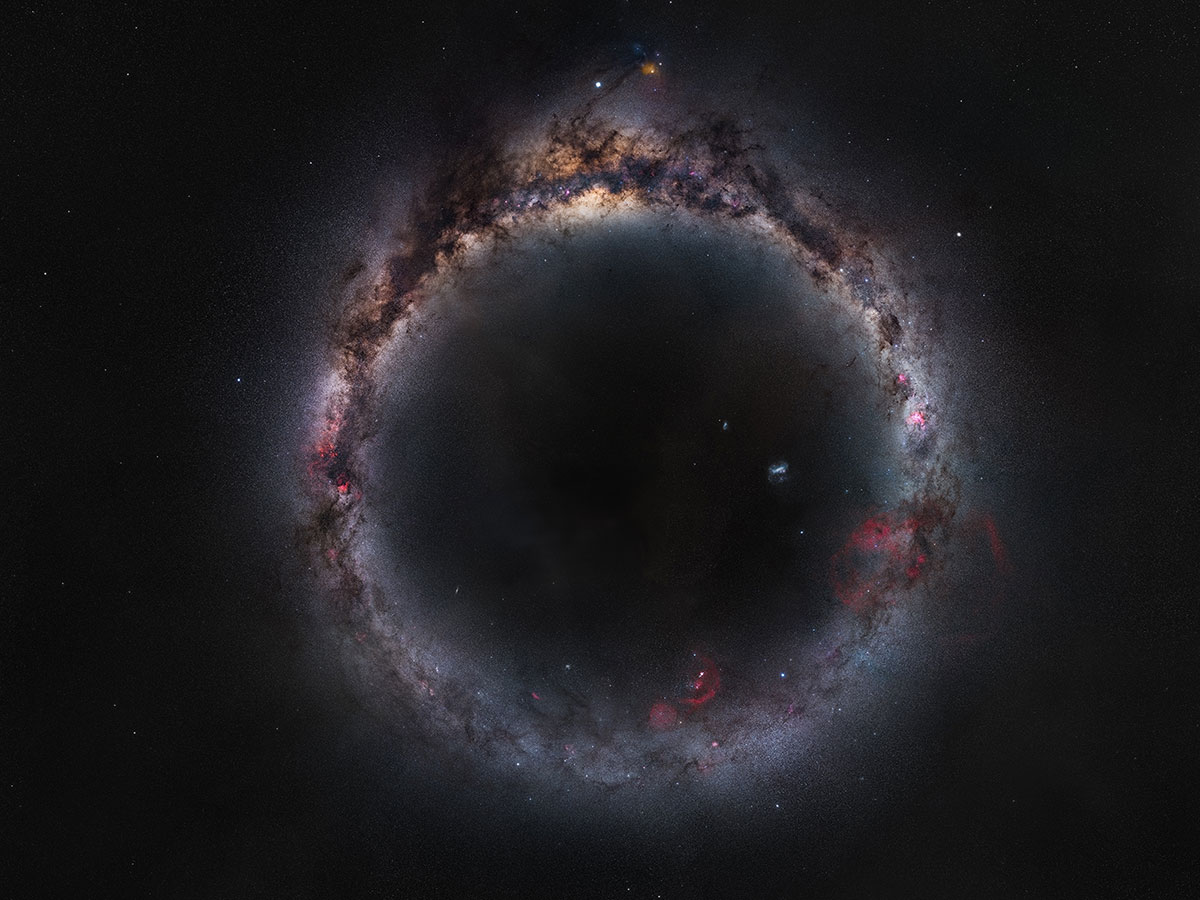
An expanse of cosmic dust, stars, and nebulae along the Milky Way form a magnificent ring, shown in this image. This panoramic photo covers the entire galaxy visible from planet Earth. Northern hemisphere sites in China and southern hemisphere sites in New Zealand were used to collect image data. This fascinating work is 360 degrees, and it took two years to complete the registration process.
The Milky Way contains two remarkable galaxies in the southern sky. The bulge in the galaxy’s center is like a shining gem above the Milky Way’s ring. The bright beacon-like planet Jupiter can be seen just above the central bulge and to the left of the red giant star Antares. About 180 degrees beyond the galactic center at the end of the ring is the region around Orion.
our month
Beyond the Limb by Nicholas Lefkada
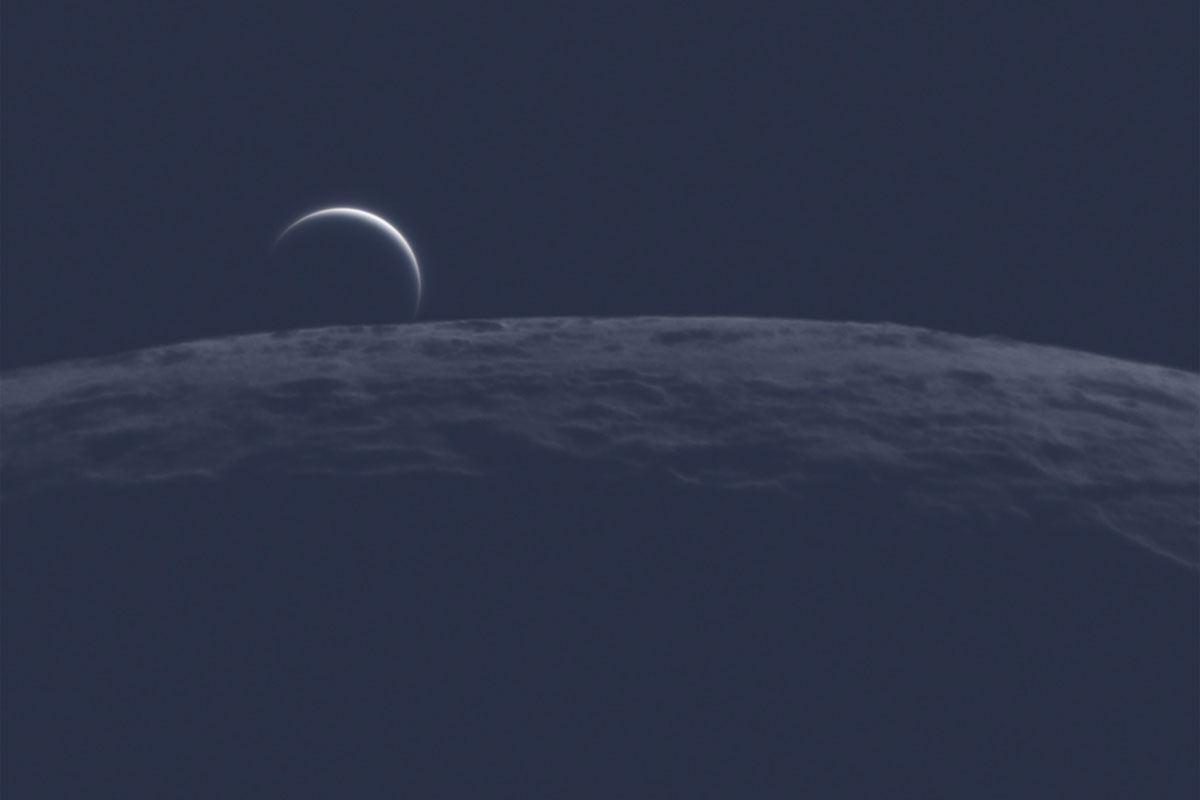
In a scene reminiscent of the Apollo missions, the lunar horizon is crowned by a planetary crescent. But this image of Earth over the Moon is not taken by a probe in orbit of our satellite, but by Venus just before the Moon hides it.
On June 19, 2020, this scene was visible from Earth in daylight. The Moon’s horizon looks very dark in contrast to the bright crescent of the planet, which is covered by white clouds.
People and space
Quarantine (Lockdown) by Deepal Ratnayaka

Following the complete quarantine of England and the travel restrictions that prevented people from moving between cities for months due to the spread of the coronavirus, astrophotography became the photographer’s focus.
This photo is a summary of 2020; Limited but hopeful. The photographer’s six-year-old daughter, also very fond of photography, was present while preparing the conditions for recording the image. He was sitting by the door and showing the stars one by one in the sky to his doll Max. It gave the photographer an excellent opportunity to put him in a frame that conveys the message behind the photo.
Planets, comets, and asteroids
A Colorful Quadrantid Meteor by Frank Koshaj

On that cold January evening, the photographer took pictures with his two other friends. They did not intend to photograph meteorites but distant galaxies and nebulae. After setting up the camera to photograph the Leo Triple Galaxies, the photographer and his friends saw a bright green meteor right in front of them as it passed through Earth’s atmosphere. All of them were terrified to see the fireball meteorite.
After they regained consciousness, one photographer’s friend pointed his camera directly toward the comet. But the photographer thought he could not capture a good picture of it in any way; Because it was utterly zoomed. Of course, he thought wrong; Because when he checked his camera, he realized it wasn’t fully zoomed in. When he tried to photograph the comet, he framed it perfectly. This incredible work was recorded entirely by accident and without prior planning.
Heavenly scenery
Luna Dunes by Geoffrey Lawless
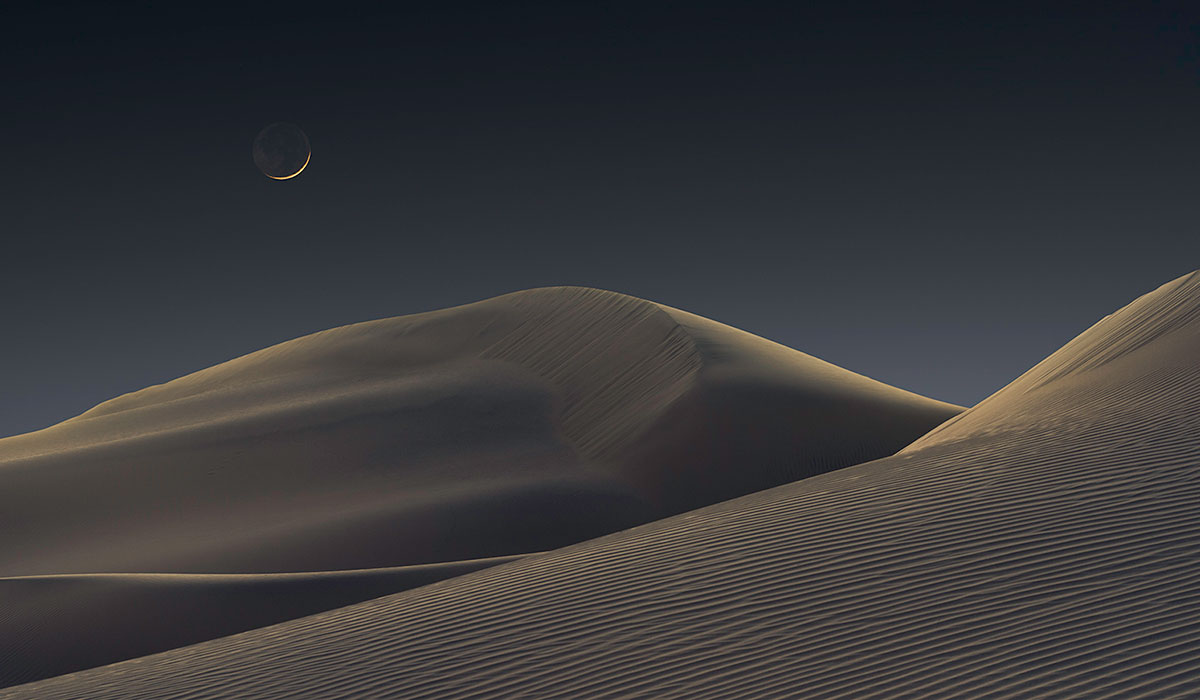
A burning crescent moon floats in the blue ocean atmosphere above the calm, shimmering dunes, and the red of the sunset fades into a blue twilight. This photographer went deep into the dunes and finally found the background he imagined for this photo. When everything came together, he looked up and saw the bright crescent moon lying beautifully in the sky.
This image, created from the HDR/perspective combination, merges four images. All photos were taken on the same night with a 200-70mm lens and from a fixed location with a tripod. The images are blended together in Photoshop to show the photographer’s perfect scene that night.
Stars and nebulae
California Dreamin’ NGC 1499 by Terry Hancock
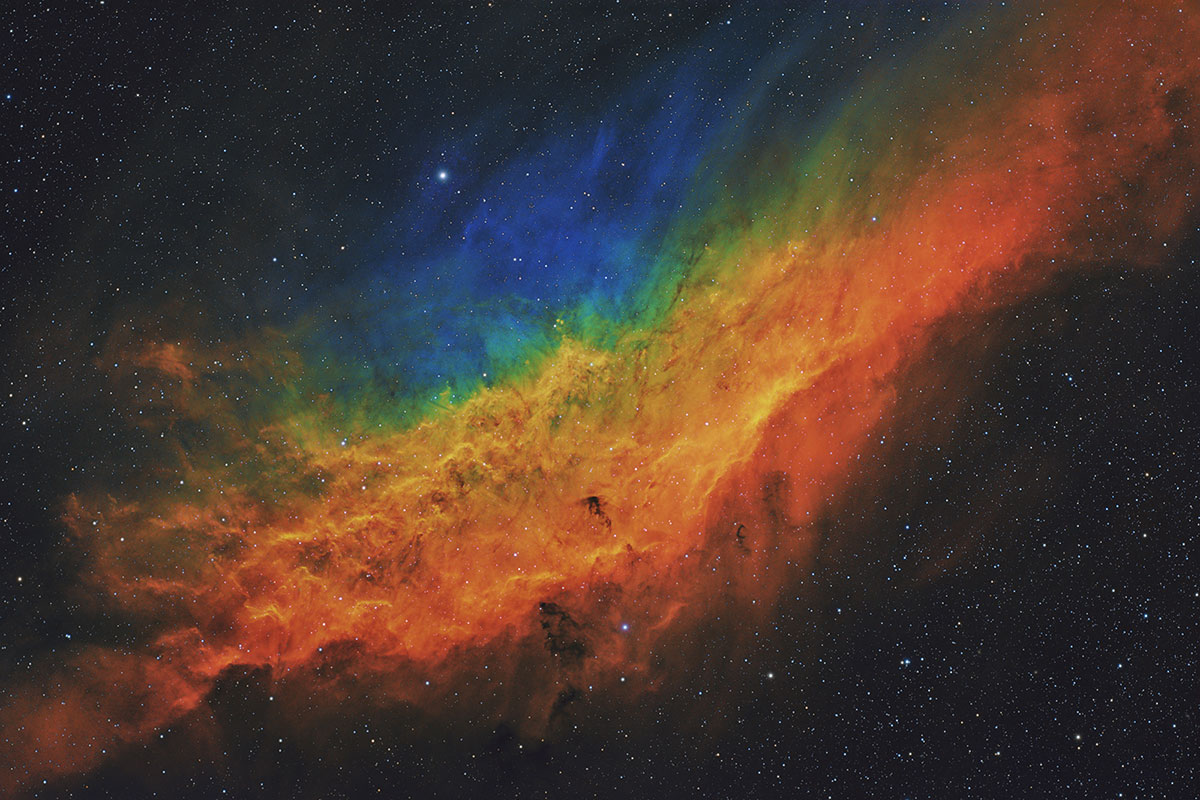
The image of the California Nebula, known as NGC 1499, was captured over seven nights in 2021 using different filters, with a total time of 16.1 hours. Raw data were processed, and stars were removed using Starnet. This nebula is about 100 light-years long and 1000 light-years away from Earth. It is named the California Nebula; Because it looks like the outline of the US state of California.
The stars were then replaced with more natural colored ones using RGB (red, green, and blue) data. In this version of the Hubble palette, alpha hydrogen is shown in green, ionized sulfur (SII) in red, and doubly ionized oxygen (OIII) in blue. The colors in this image are not natural, But narrowband filters reveal most of the invisible gases that are not visible in the standard image.
The best newcomer
Falcon 9 Soars Past the Moon by Paul Eckhart
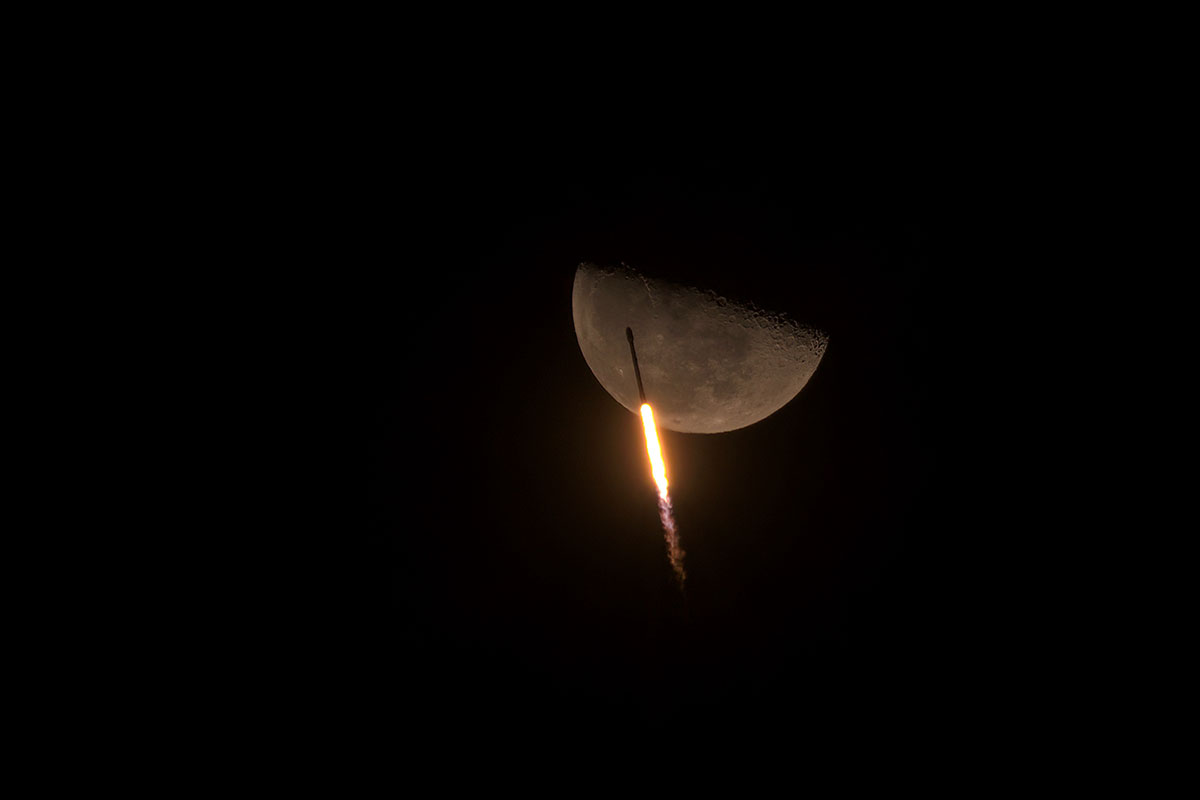
Four hours before Falcon 9 took off, the photographer downloaded the Photo Pills app, subscribed to firclub.io, and began intensive research to understand the app and determine where the flight arc overlaps the Moon. When the photographer reached the launch site, a gate blocked him. He finally entered a different dark road where trees limited the view of the launch pad. He quickly recalculated to find a better location.
He then parked his car and ran a hundred feet in the dark to a place where the sky was brighter. As Falcon 9 was ascending, it tilted and was directly facing the Moon; This was the golden time that the photographer of this work was waiting for.
Young
Family Photo of the Solar System by Zhi Po Po Wang
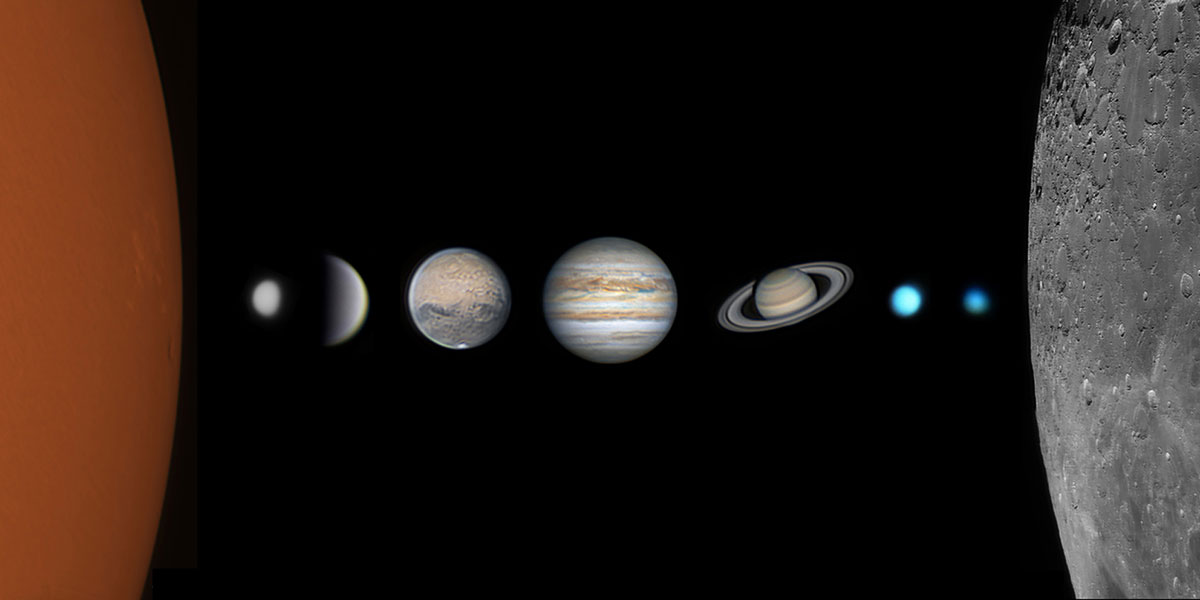
This is an image of the sun, Moon, and planets of the solar system (except Earth) taken during the year of the rat in China. This particular year, the photographer of this work was fortunate to take pictures of these celestial bodies. Capturing such a piece is considered an outstanding achievement for a student who has only been practicing astrophotography for a year.
All winning, runner-up, and shortlisted entries can be viewed on the Royal Observatory website. This year’s winners shortlisted entries, and a selection of previous winners will be published in the competition’s official book, available to pre-order from Royal Museums Greenwich shops and online for £25 (about $35).
***












